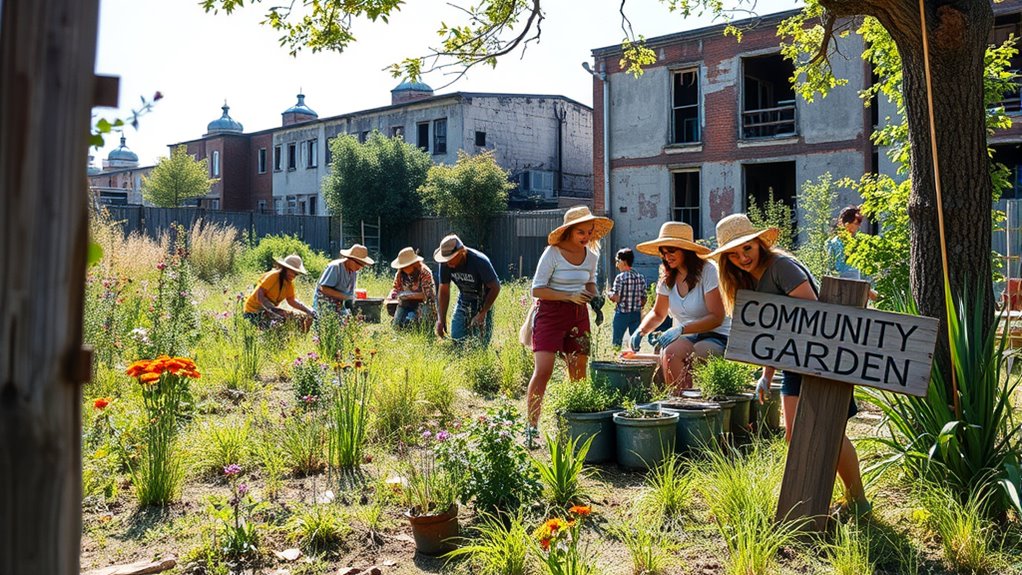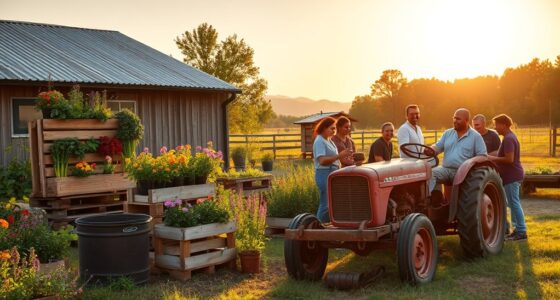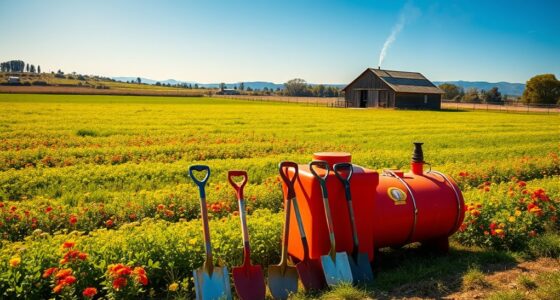Starting a farm with no money or land is definitely possible! You can begin by utilizing small-scale methods like backyard gardening or leasing nearby spaces. Focus on low-cost, sustainable practices to minimize your investment and learn valuable skills. Exploring community resources, grants, and alternative funding can give you the financial boost you need. By creatively finding ways to acquire land and building a supportive network, you can successfully launch your farming journey. There's much more to explore!
Key Takeaways
- Starting small by utilizing backyards or leasing land minimizes initial investment and allows for practical learning experiences in farming.
- Assess available resources and explore grants or crowdfunding options to secure necessary funding for seeds, tools, and other expenses.
- Implement sustainable farming practices, such as crop rotation and organic methods, to improve soil health and reduce costs.
- Engage with local farmers for mentorship and community support, enhancing knowledge and networking opportunities for your farming venture.
- Research government programs and grants that specifically target new farmers, providing financial assistance and resources for startup costs.
Understanding the Concept of Starting Small
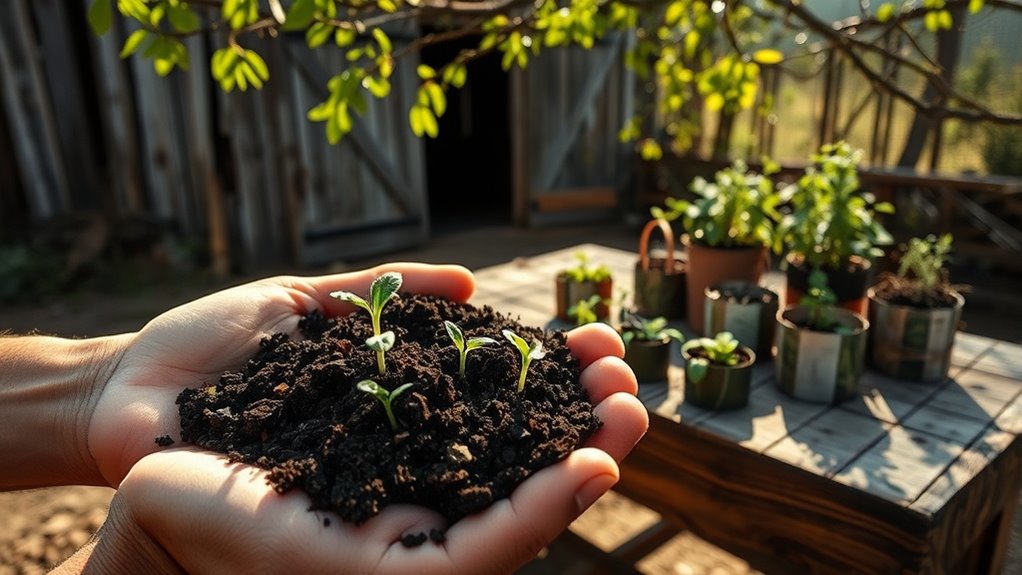
Starting a farm may seem daunting, especially if you lack money or land, but understanding the concept of starting small can make it achievable. By focusing on low-cost methods, you can minimize your initial investment and learn important lessons without risking too much.
Consider utilizing your backyard or leasing a neighbor's yard to kick off your farming journey. Building relationships within your local community can provide essential support and resources.
Emphasizing sustainable practices not only helps the environment but can also lower your costs. Remember, gradual expansion allows you to adapt and refine your approach.
Starting small can lead to significant growth, so embrace this manageable path and watch your farming aspirations flourish.
Assessing Available Resources
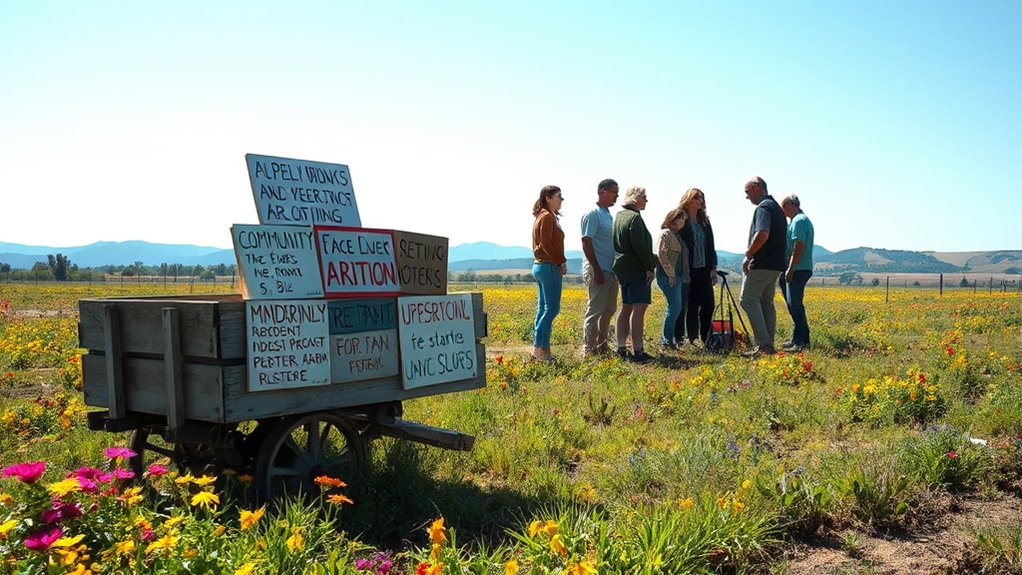
Before diving into farming, it's essential to assess the resources you have at your disposal.
Start by evaluating your financial situation; even minimal investment can cover seeds or tools. Look into grants, loans, or crowdfunding to secure needed funds.
Evaluate your finances; even small investments can buy seeds or tools. Explore grants, loans, or crowdfunding options for funding.
If land ownership isn't an option, consider leasing or assessing existing land for its productivity and infrastructure.
Don't overlook your own skills—determine where you might need training or mentorship. Building connections with local farmers can provide valuable support.
Lastly, research local markets to understand demand and regulations. Additionally, consider developing a budget plan to manage your farming expenses effectively.
Implementing Sustainable Farming Practices
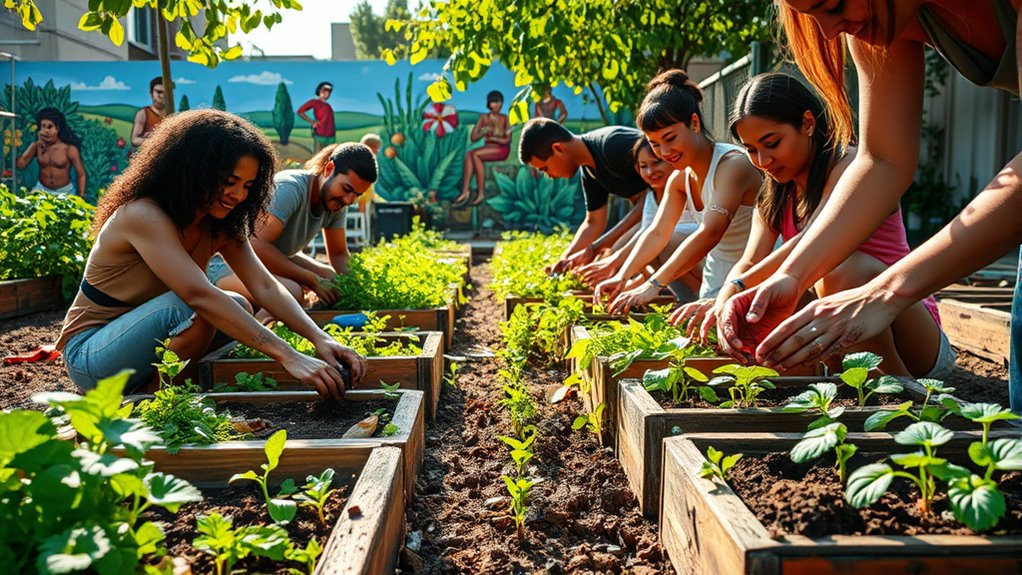
Once you've assessed your available resources, the next step is to implement sustainable farming practices that maximize efficiency and minimize environmental impact.
Start with crop rotation and diversification to enhance soil fertility and disrupt pest cycles. Embrace organic farming methods to maintain biodiversity and avoid synthetic inputs.
Consider conservation tillage to reduce soil erosion and retain moisture. Incorporate agroforestry by integrating trees into your landscape, promoting ecological balance.
Use cover cropping to protect soil health and control erosion. Don't forget about composting to enrich your soil naturally.
Financial Strategies for New Farmers
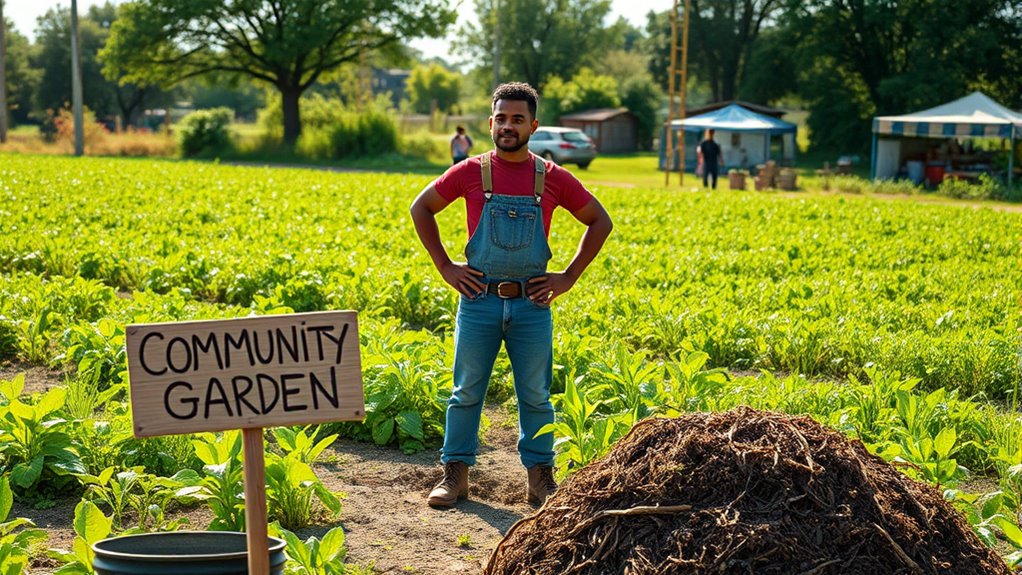
As you embark on your farming journey, having a solid financial strategy is essential for success. Start by creating a comprehensive budget to track your income and expenses, ensuring you're aware of your financial landscape.
A solid financial strategy, starting with a comprehensive budget, is crucial for your farming success.
Assess potential risks like market fluctuations or weather events, and set clear short-term and long-term financial goals. Explore operating loans for seasonal expenses and consider grants and subsidies for additional funding.
Invest wisely in technology or equipment to enhance profitability. Regularly forecast your cash flow and manage expenses to maintain stability.
Keep accurate records and separate personal and farm finances. Lastly, build relationships within your community for support and insights, helping you adapt to the ever-changing agricultural environment.
Navigating Legal and Regulatory Requirements

Navigating legal and regulatory requirements can feel overwhelming, especially for new farmers.
You'll need to choose a business structure like a sole proprietorship or LLC, each with different tax implications. Register your farm by obtaining a federal tax ID number (EIN) and a state tax ID number. This choice can also affect your eligibility for USDA programs, so consider seeking guidance from the Sustainable Agriculture Research and Education (SARE) program.
Don't forget about licenses and permits—federal, state, and local requirements vary based on your farm activities.
Finally, ensure compliance with labor laws and consult legal experts if needed. By addressing these areas, you'll set a solid foundation for your farming venture.
Building a Supportive Community Network

Establishing a farm isn't just about legal compliance; it's also about connecting with your community. Building a supportive network can offer you invaluable resources, from education to mentorship. Transforming spaces to accommodate elderly farmers can also enhance the inclusivity of your farming initiatives. Additionally, having a strong camping community can provide valuable insights and experiences that enrich your farming journey.
Consider joining farmer networks focused on specific interests, such as organic farming or women in agriculture, for targeted collaboration. Timing your recruitment efforts during off-seasons and using local media or social platforms can help you attract members effectively.
Community Supported Agriculture (CSA) models not only create stable markets but also strengthen bonds between farmers and consumers. By engaging in local events, you foster relationships that enhance community resilience. Additionally, understanding the importance of water sources can be crucial for successful farming practices in community collaborations.
Ultimately, your network can be a lifeline, providing support during challenges and opportunities for growth.
Creative Solutions for Land Acquisition
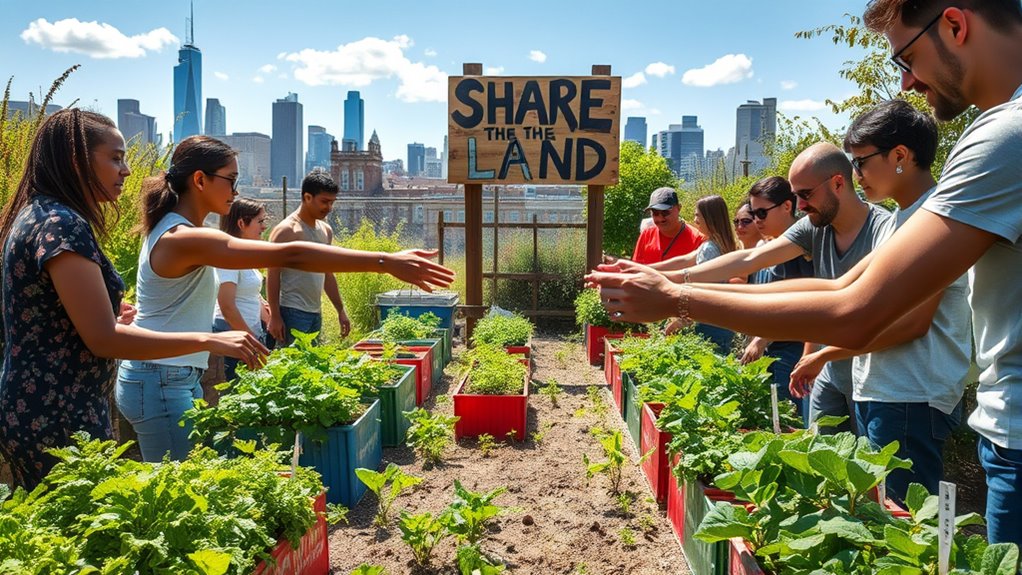
While finding land for your farm may seem daunting, creative solutions can pave the way for successful land acquisition.
Consider lease-to-own agreements that let you buy the property over time, or equity-sharing arrangements where you invest in improvements and get reimbursed. Long-term leases offer stability, while public land leases can provide sustainable farming options.
You can also utilize unused spaces—turn backyards or vacant lots into mini-farms, or partner with schools to access their unused land.
Explore community land trusts and cooperative models for shared ownership. Lastly, crowdfunding can help raise the funds needed to secure your farming space.
With these strategies, you can make your farming dreams a reality, even without initial resources.
Leveraging Skills and Tools Effectively
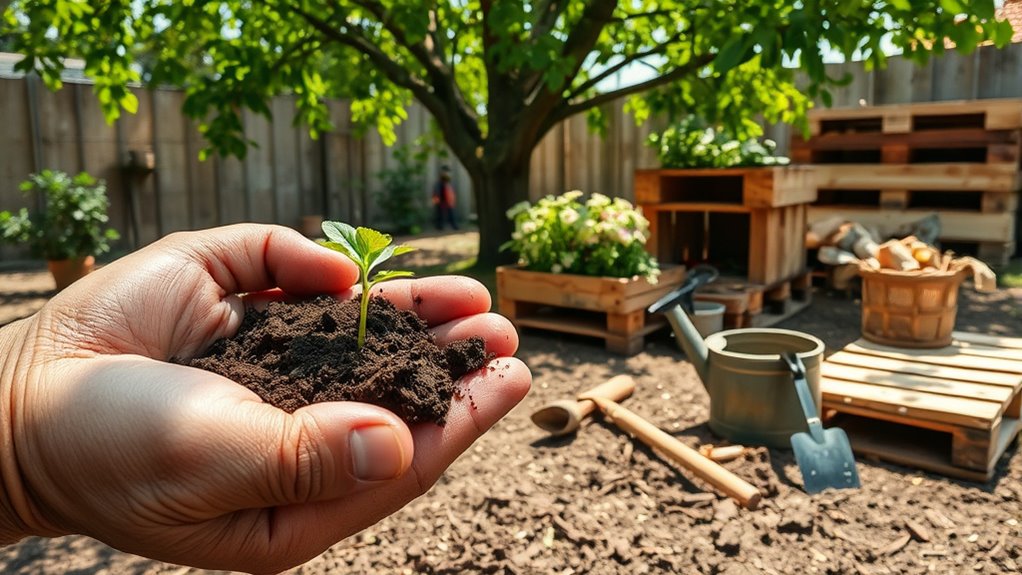
Harnessing your skills and available tools can significantly boost your farming success, even with limited resources.
Start by deepening your understanding of soil types and their nutrient needs, which is crucial for effective farming. Utilize your knowledge of crop rotation to maintain soil health and keep pests at bay. Additionally, be aware that different animal species can share resources effectively, which can help maximize your limited space. Incorporating chia seeds into your crop rotation can also enhance soil health due to their nutrient density.
Don't overlook the importance of pest management skills, especially those that avoid chemicals. Familiarity with basic tools, like hoes and hori horis, is essential for daily tasks.
Don't forget to repurpose what you already have; it saves money and reduces waste. Engage with local communities to share resources and equipment, enhancing efficiency.
Lastly, keep learning about sustainable practices to further reduce costs and improve your farming outcomes. Consider incorporating self-watering planters to optimize water usage and support plant health in your farming efforts.
Exploring Alternative Funding Sources
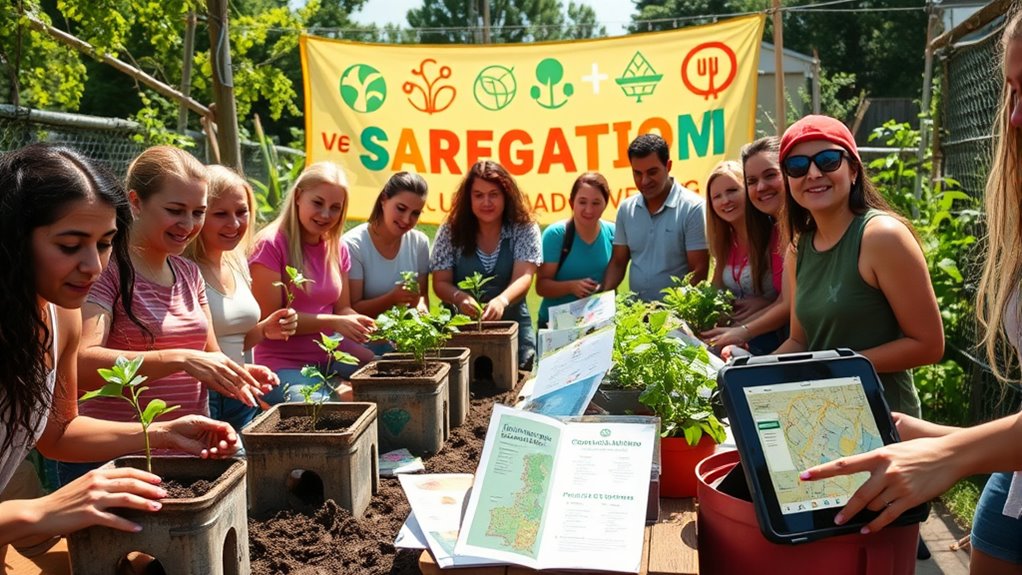
When starting a farm with limited resources, exploring alternative funding sources can make all the difference.
Look into government programs like the Microloan Program, which offers up to $50,000 for startup costs, or the Farm Operating Loan for operating expenses up to $300,000.
Grants can also be a game-changer; consider the Value-Added Producer Grant for product development or the Fund-a-Farmer Grants for humane farming projects.
Grants like the Value-Added Producer Grant and Fund-a-Farmer Grants can significantly enhance your farming project's potential.
Additionally, engage with community resources, such as local markets and cooperative projects, to reduce costs and build connections.
Don't overlook programs like Individual Development Accounts that match your savings, or the Farmer Veteran Fellowship Fund if you're a veteran.
These options can provide the financial boost you need to launch your farming venture.
Frequently Asked Questions
Can I Start a Farm Without Any Prior Experience?
Yes, you can start a farm without prior experience!
You'll want to educate yourself through courses, online resources, and workshops to gain essential knowledge.
Volunteering on existing farms or joining community gardens offers hands-on experience.
Networking with experienced farmers will provide valuable insights.
What Types of Crops Require the Least Investment?
Imagine planting a tiny seed and watching it flourish into a vibrant garden.
When considering crops that require the least investment, think about microgreens and oyster mushrooms. They're low-cost and thrive in small spaces.
Basil and garlic are also great choices, needing minimal equipment and space.
With legumes like lentils, you can enrich your soil naturally while keeping costs down.
Embrace these options, and you'll cultivate a flourishing garden with little financial strain.
How Can I Find Local Farming Mentors?
To find local farming mentors, start by reaching out to organizations like the Young Farmers Coalition and ATTRA, which offer networking and mentorship programs.
Visit local extension offices to connect with experienced farmers. Attend community events, educational workshops, and farmers' markets to meet potential mentors.
Collaborate on projects or participate in sustainability initiatives to deepen those relationships.
Don't hesitate to ask for guidance; most farmers are eager to share their knowledge and help you succeed.
What Are the Risks of Starting a Farm With No Capital?
Starting a farm without capital involves significant risks.
You'll face high initial costs for equipment and infrastructure, and securing loans can be tough since banks often see farming as risky.
Your income will likely fluctuate due to market and weather conditions, impacting financial stability.
Additionally, lack of experience and complex regulations could lead to operational challenges.
Without adequate funding, you might also struggle to access essential resources and support.
Can Urban Farming Be a Viable Option?
Yes, urban farming can be a viable option for you.
With access to local markets, you can sell fresh produce directly to consumers, enhancing your profitability. By leveraging innovative practices and community engagement, you'll maximize your resources and build a loyal customer base.
While competition exists, focusing on niche products can set you apart.
Plus, community collaboration can help reduce costs and provide valuable support as you navigate urban farming challenges.
Conclusion
Starting a farm with no money or land isn't just a pipe dream; it's totally doable with the right mindset and creativity. By leveraging your skills, tapping into community support, and exploring alternative funding options, you can turn your agricultural dreams into reality. Remember, even the most successful farmers began with little more than a vision. So grab your pitchfork and start planting those seeds—who knows, you might just harvest a thriving farm before you know it!

